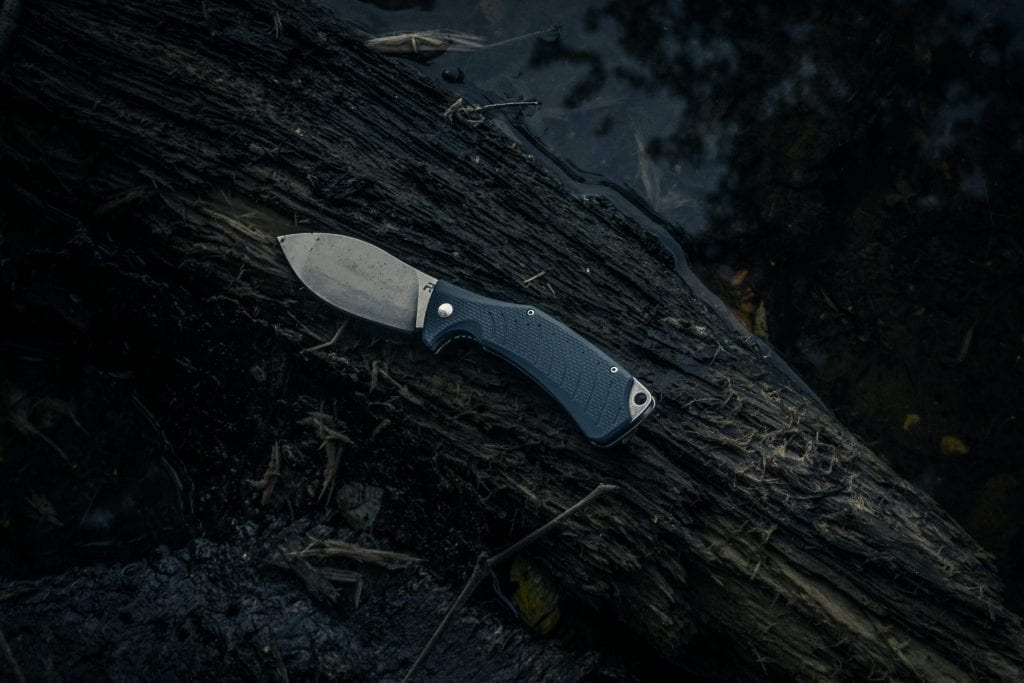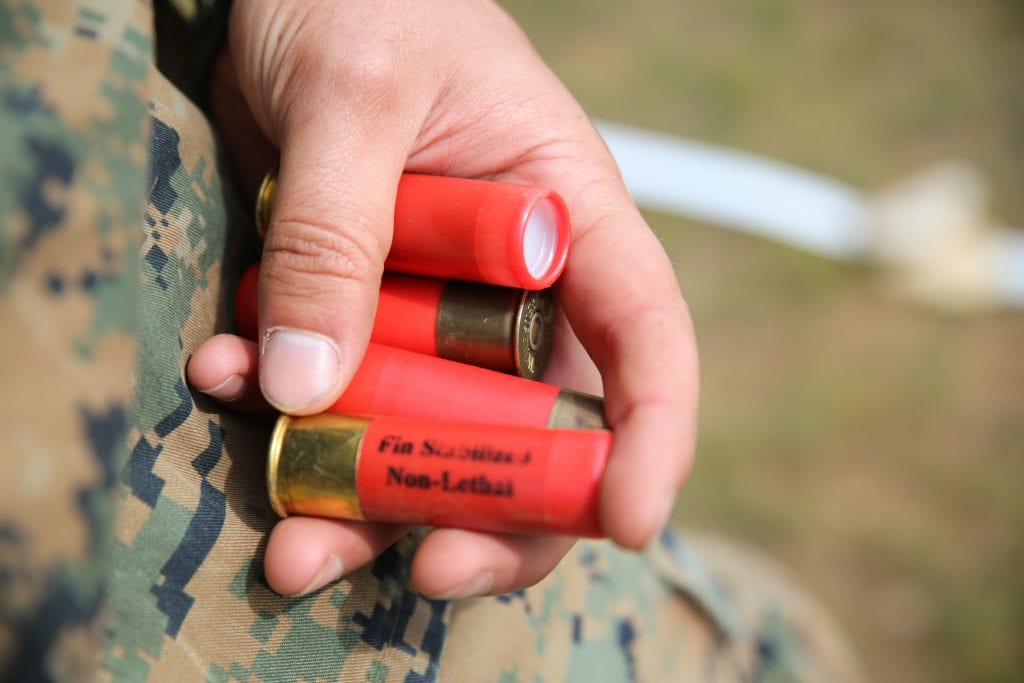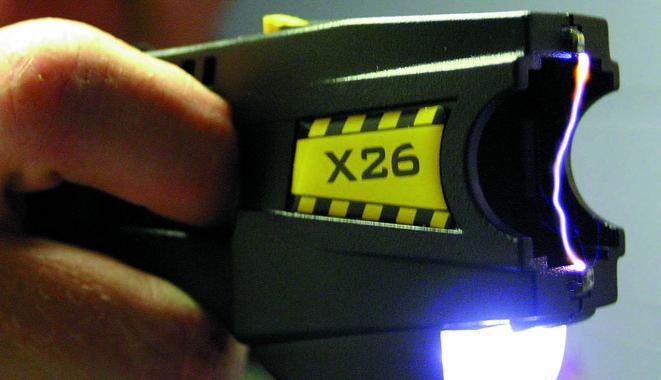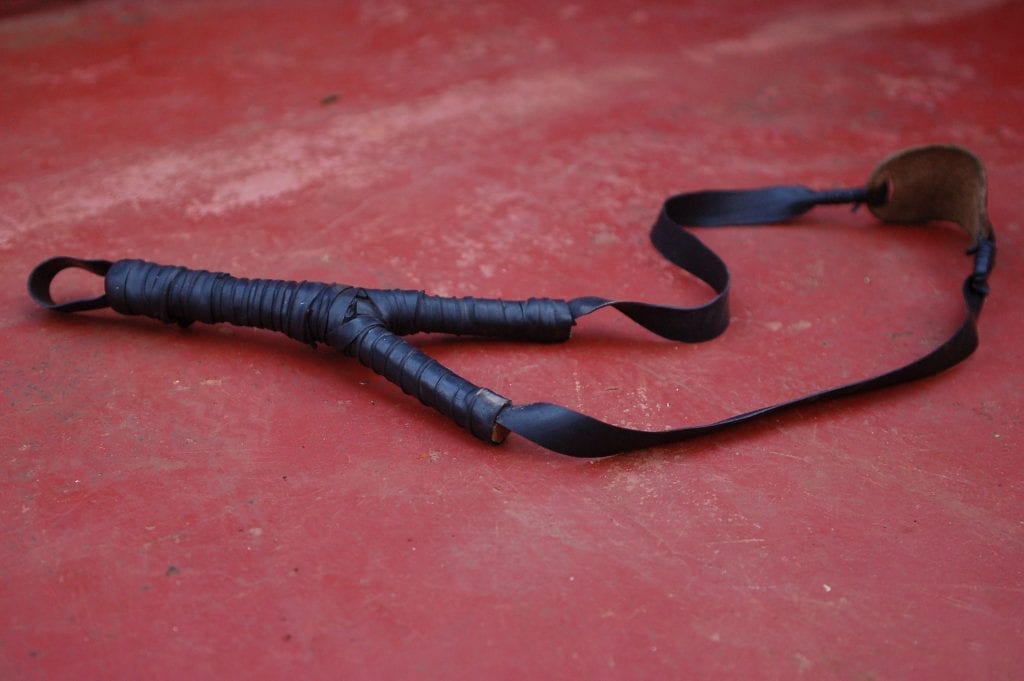When prepping, bear in mind the top two necessities according to Maslow’s Hierarchy of Needs: physiological and safety needs. Of course, you’re going to need food, water, clothing, and shelter to survive, but you must also look out for your safety and security.
Safety and security needs mean you can protect yourself and your family from an unforeseeable crisis (financial, health, and physical protection). Physical protection from what? Let’s say from ill-willed individuals who intend to hurt you or maybe from wild animals. In short, for self-defense purposes.
For this, you’ll be needing self-defense weapons, and of course, we don’t want to inflict harm fatally, so it is best to choose non lethal weapons. It is safe for both parties and, at the same time, guarantees the protection of you and your family.
How well aware are you of these non lethal weapons? If this sounds interesting to you, read up, and we’ll find out which non lethal weapon suits your needs best.

Non Lethal Weapons
Definition
The U.S. Department of Defense defines non lethal weapons as “weapons, devices, munitions that are explicitly designed and primarily employed to incapacitate targeted personnel or materiel immediately, while minimizing fatalities, permanent injury to personnel, and undesired damage to property in the target area or environment. non lethal weapons are intended to have reversible effects on personnel and materiel.” [1]
Non lethal weapons are instruments used to induce pain but minimize the risk of permanent injuries and casualties. Others would call it a non-deadly weapon because it aims to take control of the target with temporary pain and has no lifelong harmful consequences.
There are many types of non lethal weapons, and each one serves its purpose. Some may need precautions handling, and some require proper training before use, while some may be safely used by civilians. As long as its use will not cause any fatality, it may be classified as a non lethal weapon.
Purpose
Non lethal weapons are now widely used for different purposes. For civilians, it is used for self-defense; law enforcement uses it for crowd control, peacekeeping, and riots.
In short, the purpose of non lethal weapons include, but are not limited to:
- Self-defense (against human or animals)
- Incapacitation of the target but not inflicting permanent or fatal harm
- Crowd control for riots
- Combat (Training or actual)
- Safety and protection (for prepping purposes)
Effects
There are many kinds of non lethal weapons, and it has different effects on its target. Such as:
- inflict pain and cause blunt trauma (batons)
- temporary visual impairment (tear gas)
- auditory effects (flashbang)
- electrophysiological effects (tasers)
- pharmaceutical effects (tranquilizers)
At this point, you are now quite clear of the definition, purpose, and effects of a non lethal weapon. Now let’s find out the types of non lethal weapons, its uses, and which one suits your needs.
Types of Non Lethal Weapons
Ammunition
Ammunition or others would call it non lethal rounds are firearms designed to incapacitate targets with guns, using non-deadly ammunition. The ammunition rounds are designed to rely on the force of kinetic energy and blunt force to cause pain and disable.
Examples of non lethal ammunition weapons are with the use of:
- Rubber bullets: When using rubber bullet ammunition or rubber buckshot, only aim at the legs or lower abdomen. This only causes lacerations and bruises, where it can heal without any imminent danger. As compared to hitting the target in the head or chest area where it leads to life-threatening injuries (e.g., internal bleeding, a fractured rib, etc.)
- Wax bullets: Wax bullets have been in use for over a century for indoor shooting, training, and sports competitions. The wax bullets are proven to be safe and can only cause minor blunt paint and minimal bruising.
- Plastic bullets: Plastic bullets or plastic baton rounds are less-lethal munitions fired from a special kind of gun. When shot directly at the target, it may cause bruising or broken bones when appropriately used.
- Beanbag rounds: Beanbag rounds are classified as a non lethal weapon, but when the user has inadequate training, it may lead to severe complications or death. Bean bag rounds are only recommended for targeting or shooting the extremities. If other areas of the body like the chest, head, and abdomen are hit, it may lead to unwanted complications.
- Sponge grenades: Sponge grenade is a non lethal weapon used for riot control. A 40mm grenade launcher is used to fire the sponge grenade to disable a certain target or cause confusion in a riot. Sponge grenades should not be aimed at distances less than 10 meters because it may cause severe injuries or fatalities.
- Ring airfoil projectiles: A ring airfoil projectile is designed initially to incapacitate riots by the use of blunt trauma or tear gas.
- Paintball guns: It is otherwise known as a paintball marker or marker, is an air gun used in the paintball shooting (for recreation or sports). Paintball markers use compressed gas like compressed air or carbon dioxide.
You may be aware of airsoft guns, airguns, and paintball guns used for recreation. These are considered to be non lethal weapons when safely used. That is why it was mentioned earlier in this article that for some non lethal weapons, proper training is needed to avoid unwanted complications.
So if you’re in search of non lethal ammunition for home use, you may want to opt for safer options like rubber, wax, or plastic bullets. These will inflict tolerable pain and will temporarily disable the target.

Explosives
Legal non lethal weapons that are handheld explosives are also available. Some of these weapons have been widely used in combat too. Examples are:
- Flashbang or stun grenades
- Sting grenades with rubber shrapnel
- Grenades with chemical irritants
Police officers, correctional officers, and the military, use non lethal hand grenades to incapacitate individuals. Like bean bag ammunition, the use of these non lethal explosives requires proper training.
Blunt trauma grenades, also known as sting ball grenades and rubber ball projectile rubber spheres at a non-lethal force and speed, but just enough to disable the target. The flashbang or stun grenades emit flash (for temporary visual disturbances) and a loud band (for temporary audio disturbance), that’s why it’s called flashbang.
Explosive non lethal weapons are not available for purchase to the public. It is manufactured for military and law enforcement use only.

Gases and Sprays
Another type of non lethal weapons are gases and sprays, and these are classified into:
- Water Cannons: A non lethal way to control big crowds such as riots are water cannons without the intense pressure. It is one of the known ways to control riots that is safe and, at the same time, is effective.
- Pepper Spray: Pepper spray, one of the popular handheld defenses of women, is made from oleoresin capsicum, an irritant derived from cayenne pepper. When this non lethal weapon is sprayed directly to the face, the target will feel a burning sensation to the eye that they cannot open it. At the same time, a burning sensation to the mouth, nose, and throat, plus a temporary discomfort of breathing.
- Tear Gas: Some people may confuse pepper sprays and tear gas because it basically does the same effect. Their main difference is their chemical component and delivery method. The pepper spray is made from the natural ingredients of cayenne pepper and can be delivered through stream, cone, fogger, mist, gel, and foam. In comparison, the tear gas is made from synthetic organic halogen gases, CS, or CN. The most common way it is delivered is through explosives or grenades which release the burning chemicals in the air.
- Malodorants: Malodorants is the opposite of deodorants (which smells good). Mist or spray or foul-smelling scent like the skunk smell is used to drive off people. It smells so bad that it sticks on your skin for long periods, and the scent will be intolerable; you just wanted to leave.
- Psychochemical Drugs: These sedative agents use opiates, benzodiazepines, non-benzodiazepines, anti-psychotics, Rohypnol (date rape drug) to for non lethal weapons like for tranquilizers. Though continuous debate argues on its safety, and if it can be classified as a non lethal weapon. These sedative drugs may cause respiratory depression to persons with preexisting health conditions and may lead to death.
- Sleeping Gas: The chemical components of sleeping gas may vary; some use halothane vapor, or methyl propyl, or methoxyflurane. There are even rumored fentanyl derivatives that might have been used in Moscow during a hostage-taking crisis.
Riot Gun
A riot gun or a non lethal launcher is a firearm where non lethal ammunition is used. It was originally formulated to suppress riots and is also used for police and military training. It is available in forms of a shotgun, submachine guns, revolvers, and grenade launchers.
Most of the riot guns used are short-barreled (about 16 to 18 inches). Although it is categorized as a non lethal weapon, there can be life-threatening injuries with riot guns, especially when it is fired in a close range.
This is an excellent choice for a doom’s day non lethal weapon reserved on your backpack. Yes, this is available for civilians, but make sure to check out local laws and regulations of owning riot guns before making any purchase.
Electroshock Weapons
Another non lethal weapon that is widely used by law enforcement and civilians are electroshock weapons. These weapons administer safe amounts of electric shock, aiming to at least disrupt the muscle functions.
Sure it is classified as one of the top non lethal weapons, but safety issues must be remembered when using electroshock weapons. For example, people with pre-existing conditions like ventricular arrhythmia may lead to sudden cardiac arrest and die. Studies show that the target should not be exposed for more than 15 seconds, so it would not cause irreversible injuries.
The commercially available electroshock weapons are:
- Taser
- Compact Stun Guns
- Electric Shock Pods
- Stun Belts
- Stun Shields
- Wireless Long-Range Electric Shock Weapon
Directed Energy Weapons
Directed energy weapons are non lethal but can immobilize people, even vehicles. It does not projectile shoot any object, but it releases energy to incapacitate. The available Directed energy weapons are:
- Ultraviolet Laser: Ultraviolet lasers are not produced anymore since the company defunct in 2008. But it was named as a device “Beyond the Rubber Bullet,” with the capacity to immobilize humans and cars without direct contact but by ultraviolet beams only.
- Pulsed Energy Projectile: The Pulsed energy projectile is under development by the U.S. Military. This non lethal device is aimed to release an invisible laser pulse and electromagnetic radiation, causing painful sensations to the nerve cell.
- Active Denial System: The Active Denial System is an interesting non lethal weapon that emits electromagnetic radiation that can penetrate the human skin. It is powerful enough to make the victim think that they are on fire, but there is no physical damage.
- Dazzler: A Dazzler is classified as a non lethal weapon that may cause visual disturbances and may disorient the target. It emits light or infrared that could “dazzle” the target but will not cause eye damage.

Non Lethal Weapons for Civilians
Now that you have a clearer understanding of the different types of non lethal weapons, it is time to choose which weapon you can keep at home. As you may recall, not all non lethal weapons are available for commercial purchase for civilians.
That is why this list is here to give you a guide on which non lethal weapons for civilians you can own at home and how to safely and effectively use them.
Pepper Spray
The first thing you have to master when owning a pepper spray is the correct grip. Use your thumb to press the spray, and the four other fingers to securely grip the canister. Keep a safe distance between you and the target so it won’t get knocked out of your hands.
Aim for the eyes when spraying, and when the target has shut eyes, move into a safer position and call the authorities if possible. When the residue of a pepper spray comes in contact with your eyes, wash it thoroughly with running water.
Stun Gun
Always familiarize yourself with the use of the stun gun before making any purchase. Identify its safety switch, instructions, and how to aim the target. It is suggested to aim the stun gun from the waist up to the neck. When firing, hold the trigger for a minimum of three seconds, but if the target is exposed longer, it will be more effective.’
Before using, make sure to turn on the safety switch and check if the batteries are charged. Note that even the target holds on to you while you’re still holding the trigger, you will not be affected.
Stun Baton
A stun baton is a stun gun combined with a baton. This is perfect for elderly people who can pretend this is a cane. It is also the ideal non lethal weapon against animal attacks, especially dogs. Or if your purpose is just mere self-defense, the stun baton is perfect for you.
You can also get a stun baton with a flashlight, which makes it a great addition to your doom’s day prepper bag. The stun baton has the same usage instructions with a stun gun, except for the baton part, which inflicts blunt paint.
Baton
When using a baton, remember that pain is induced, not to cause injury. That is why it is suggested to hit only parts of the body that has the major muscles. These are the thigh, shin, elbow, glutes, or hands. Always stay away from the head, neck, and groin, which may cause complications like internal bleeding.
Bean Bag Gun
Bean bag guns are legal in over 50 states in the US and do not require background checks before owning one. Depending on the manufacturer, some bean bag guns can reach targets 20-30 feet away.
Always make sure that the safety pin is pulled back when not in use. To make sure that you are always prepped in emergencies, prefill the cartridge so you can fire instantly.
Upon assembly, follow the instructions properly on the user manual, and check if all parts are complete. Bean bag guns need to be clean and maintained properly, even when not in use.
Taser
It is not safe to use tasers to people with known cardiac conditions, is pregnant, has seizures, and epilepsy. The best area to hit the target is the torso, neck, underarm, groin, upper shoulders, upper hip, or areas where the nerve centers can affect the whole body.

DIY Non Lethal Weapons
If you want to protect yourself without spending too much, you can always come up with DIY non lethal weapons at home. Even just a simple stick can serve as a baton, or maybe a baseball bat.
But if you’re aiming to produce a non lethal weapon at home, make sure to ask yourself, “Will this weapon kill?” If yes, maybe you could check out these following DIY non lethal weapons:
Slingshot
The classic slingshots that are a great part of almost everyone’s childhood is easy to make non lethal survival weapon. All you need are leather strips, a Y-shaped sturdy wood, and stones as your ammo.
Homemade Pepper Spray
Commercial pepper sprays are made of cayenne peppers, so why not create one of your home at home? All you need to do is bring to boil the hot chili peppers, pour the solution in a spray bottle, and voila! Make sure to label it so you won’t mistake it for a cologne and spray it directly to yourself.
Bow and Arrow
Another DIY non lethal weapon is the bow and arrow. You may use a solid branch or PVC pipe for the bow, string, and sticks for your arrows. Playing with bows and arrows in amusement parks might come in handy after all.
Bullwhip
You can make a bullwhip out of a paracord and electrical tape as your handle. This may sound cliche, and you get the feels of being Indiana Jones, but bullwhips are actually helpful. It can inflict pain on humans and animals, which is why it’s a perfect must-have.
DIY Taser / Stun Gun
Yes, you can make your own stun gun at home. This may look like a tedious process, but it really isn’t. However, you’re going to need a lot of materials like electric sparklers, batteries, soldering iron, hot glue gun, cutter, and screwdriver. [2]
Conclusion
Now you know your choices, what non lethal weapon do you want to keep at home? Remember that some of these weapons may not be legal in your region. It is always best to check with your local policies before making any purchase.
If ever you make a purchase or maybe create a homemade weapon, make sure to get a grip of it and practice on how it is used properly. The last thing you want is to experience untoward incidents or might get hurt yourself.
